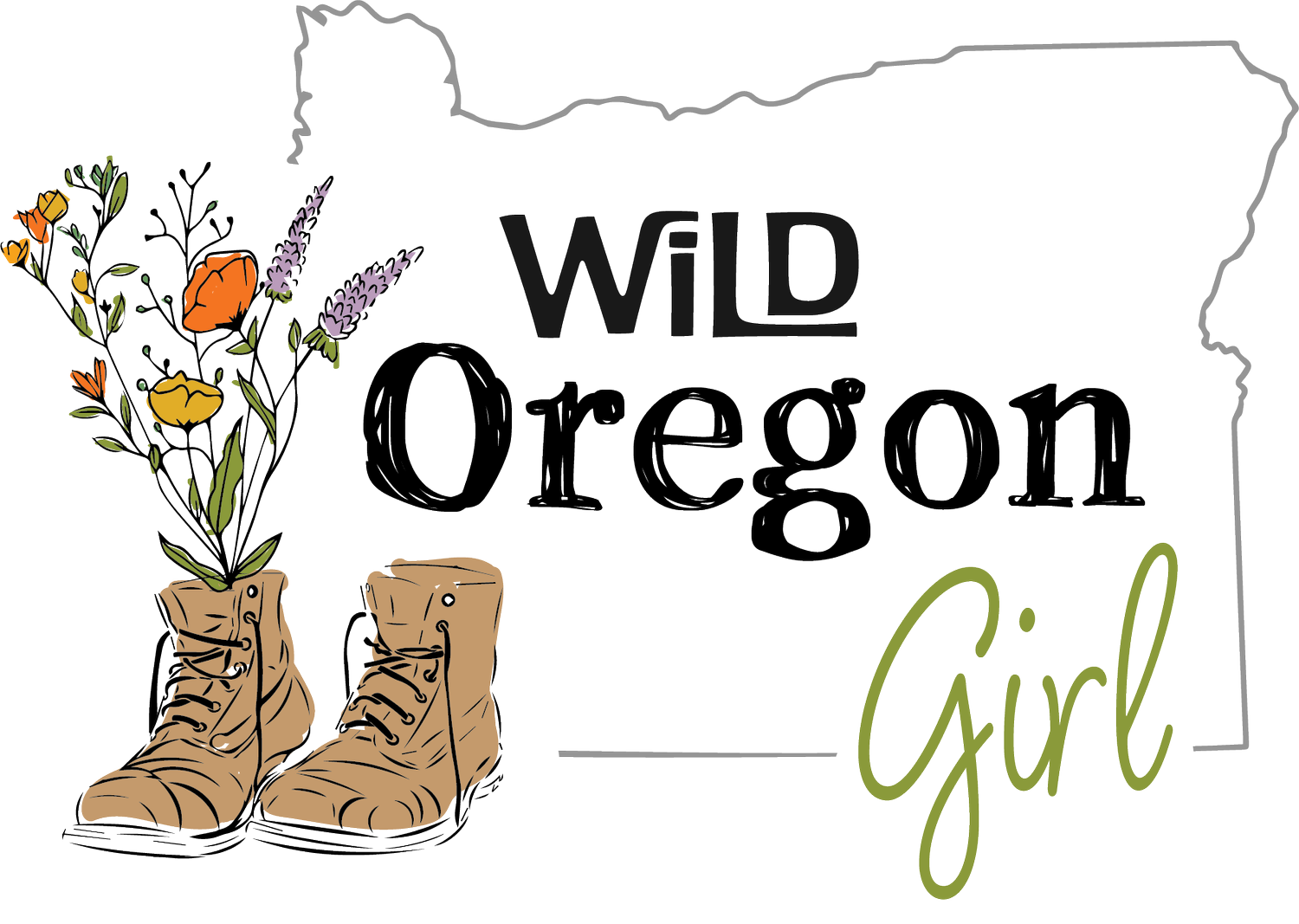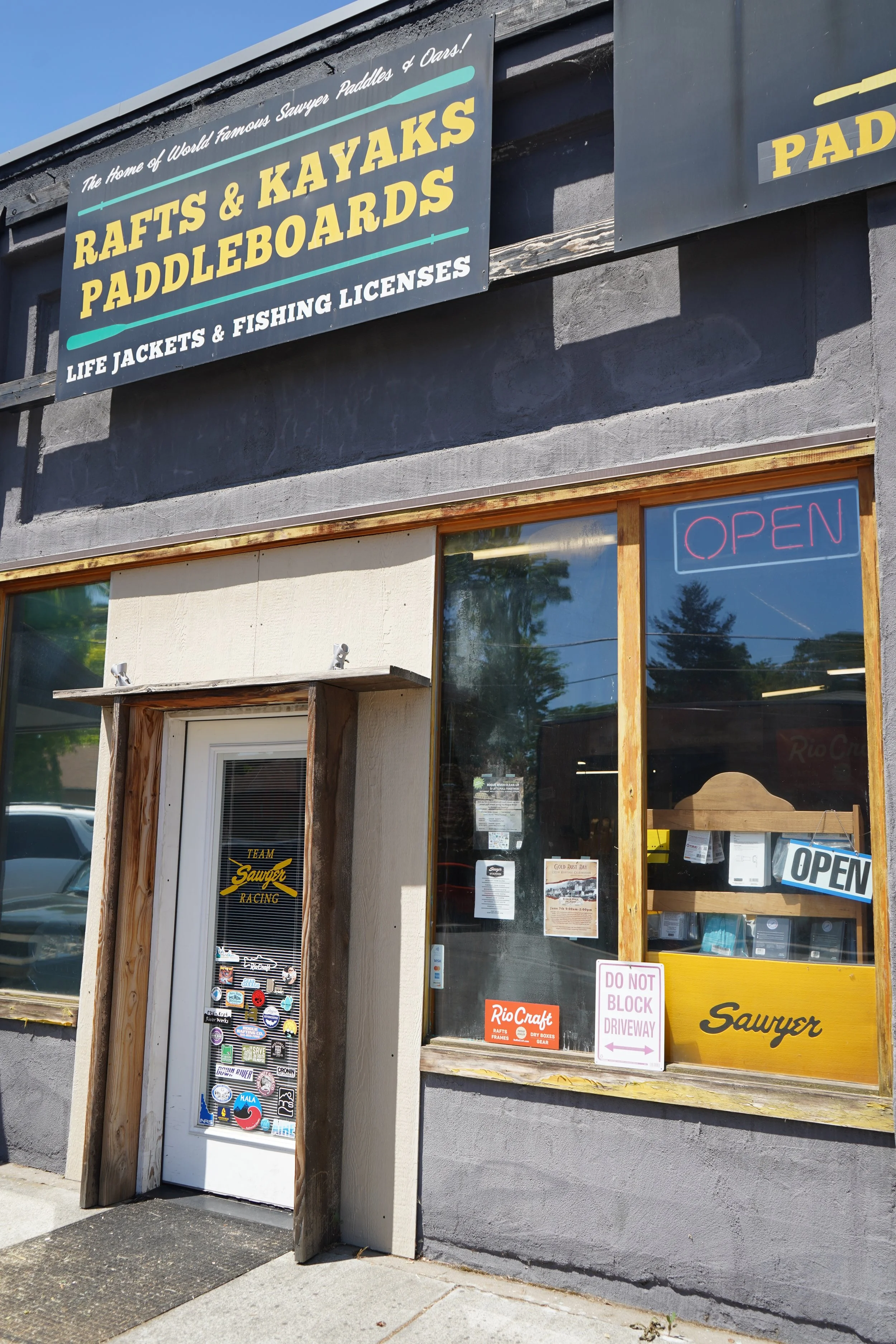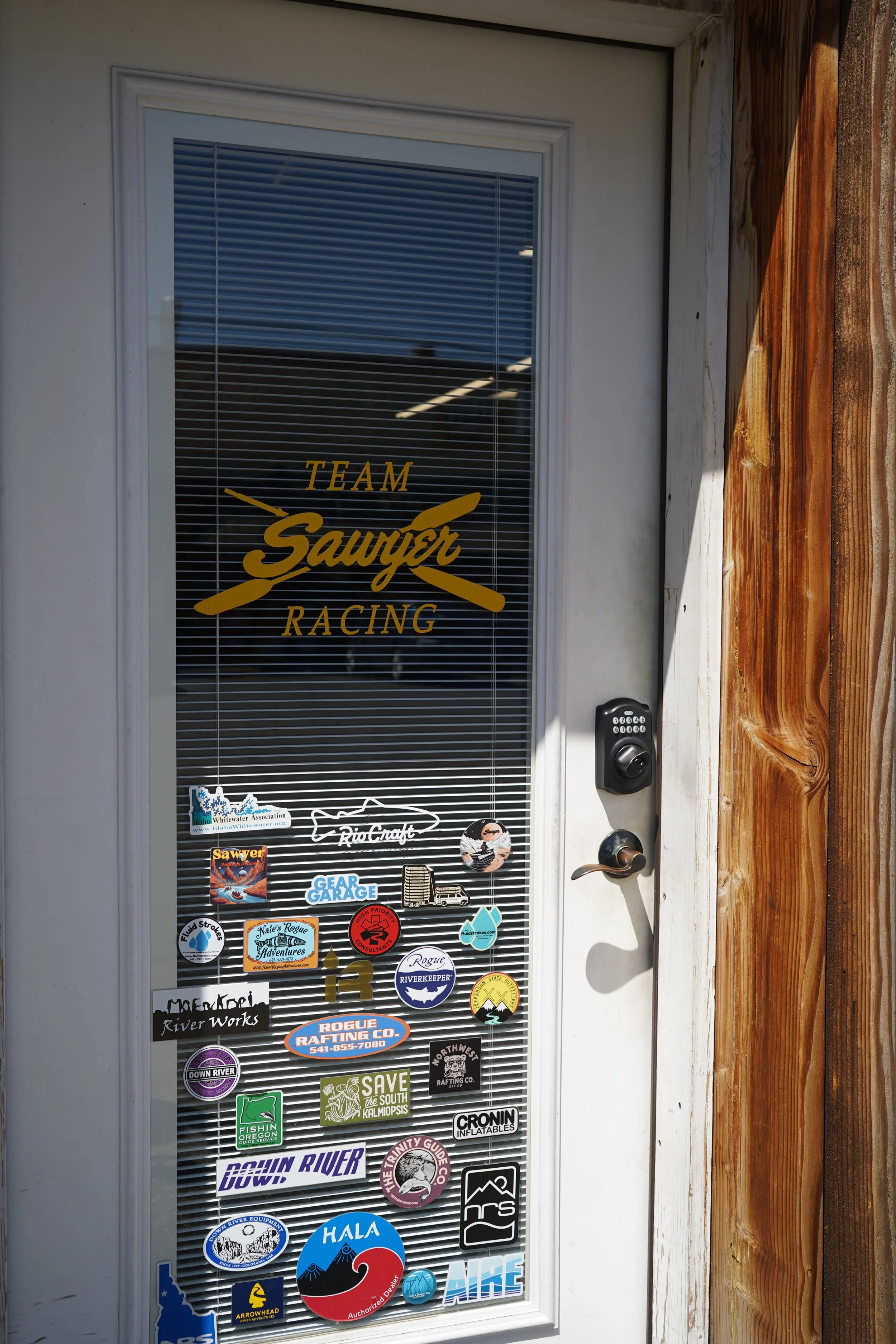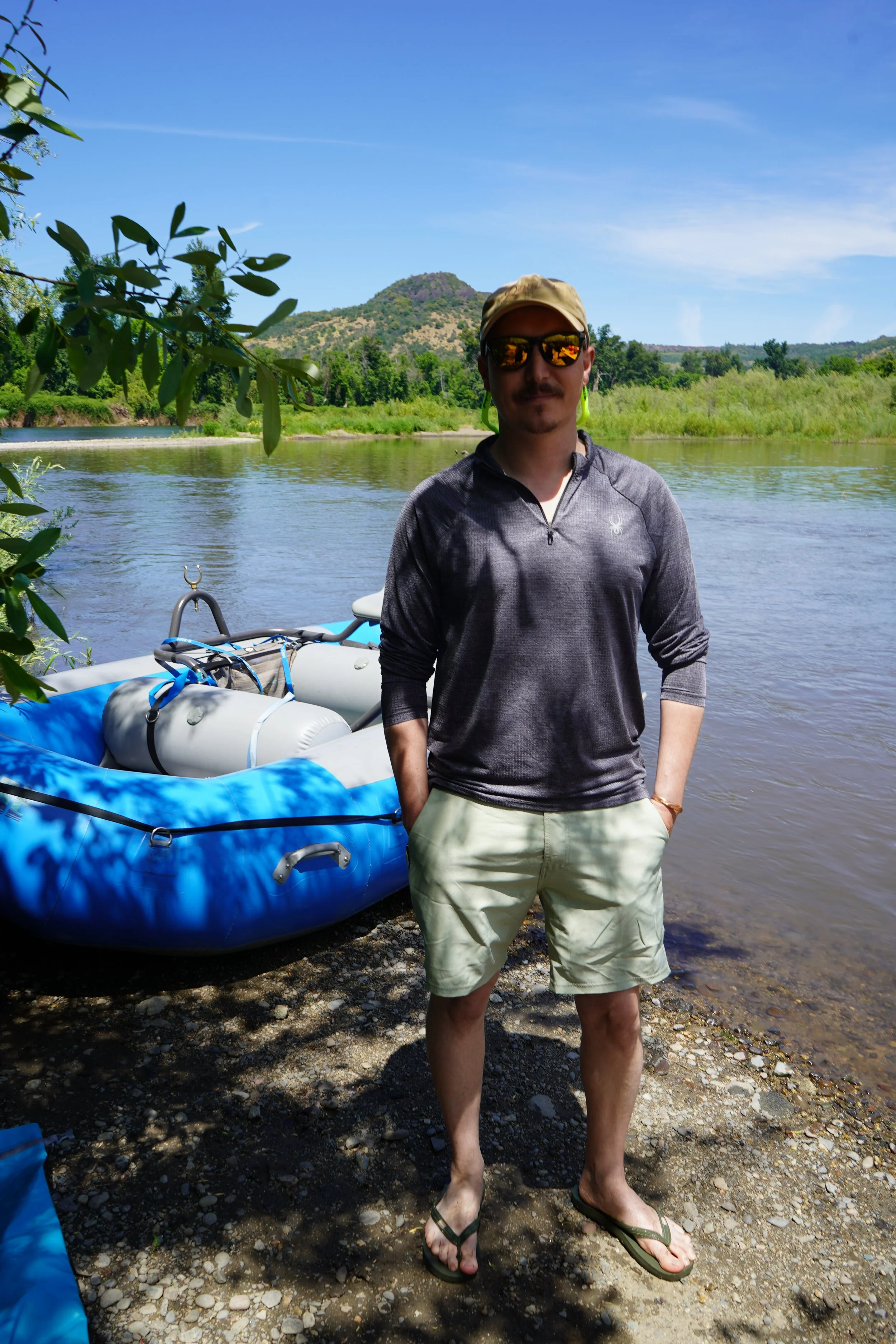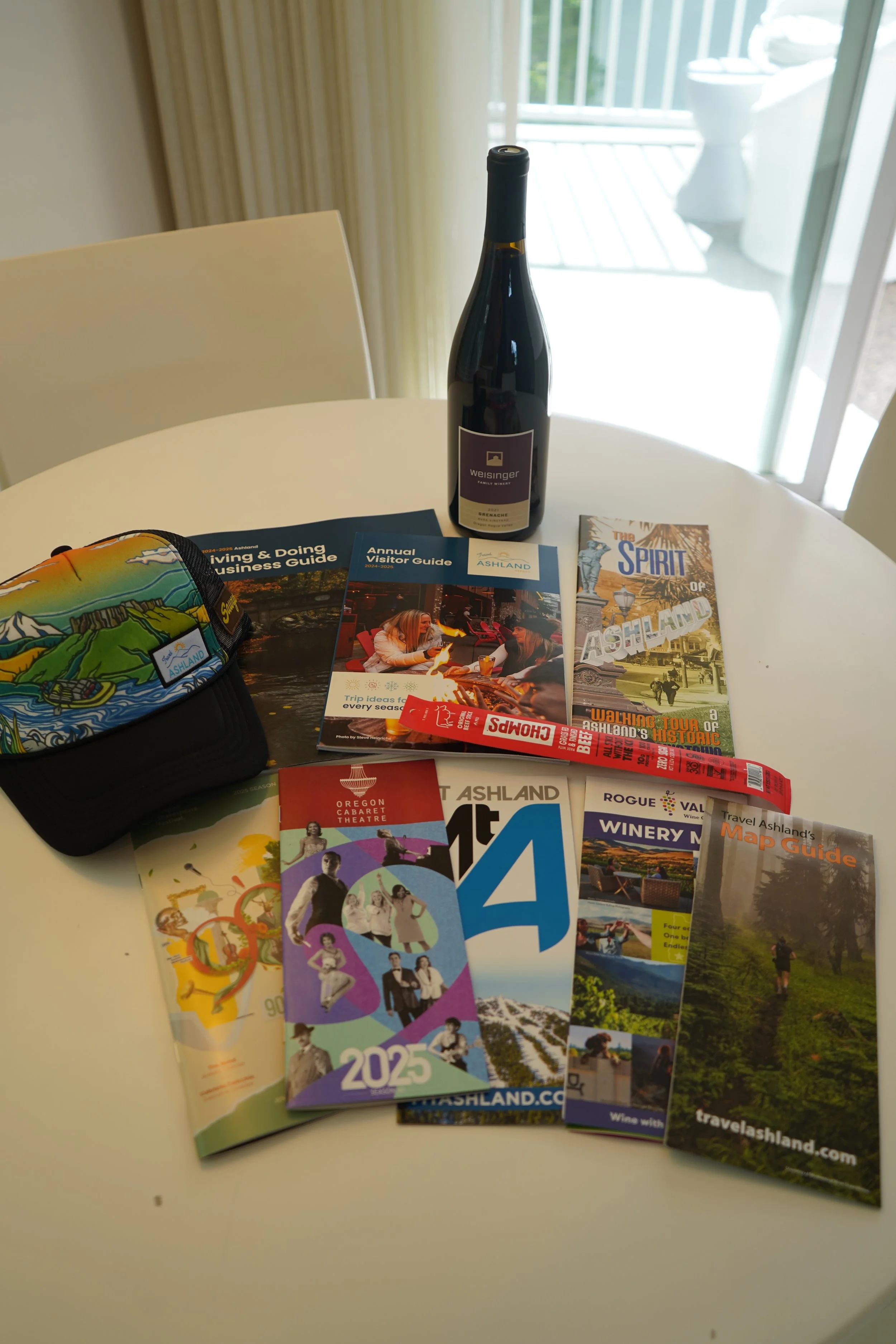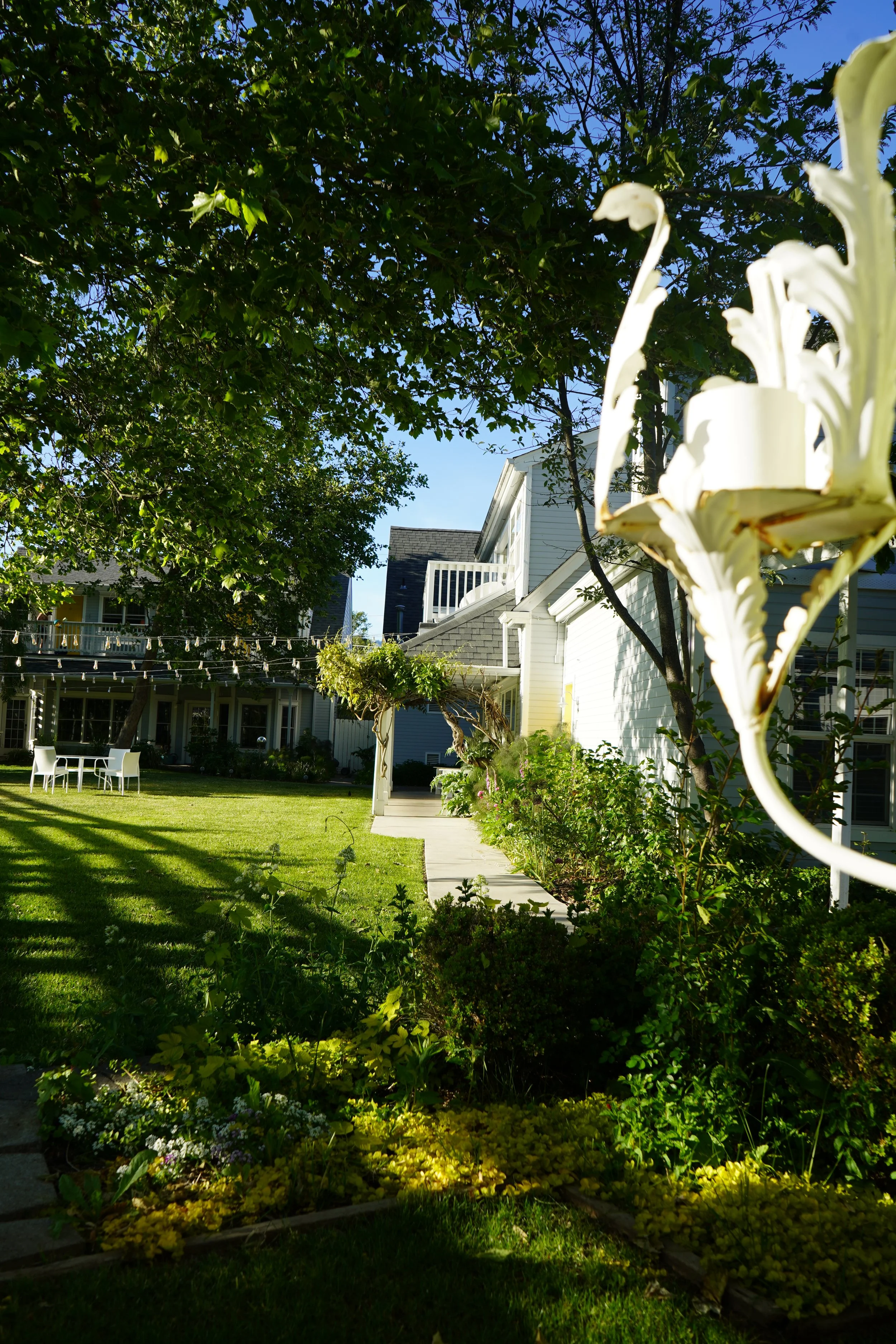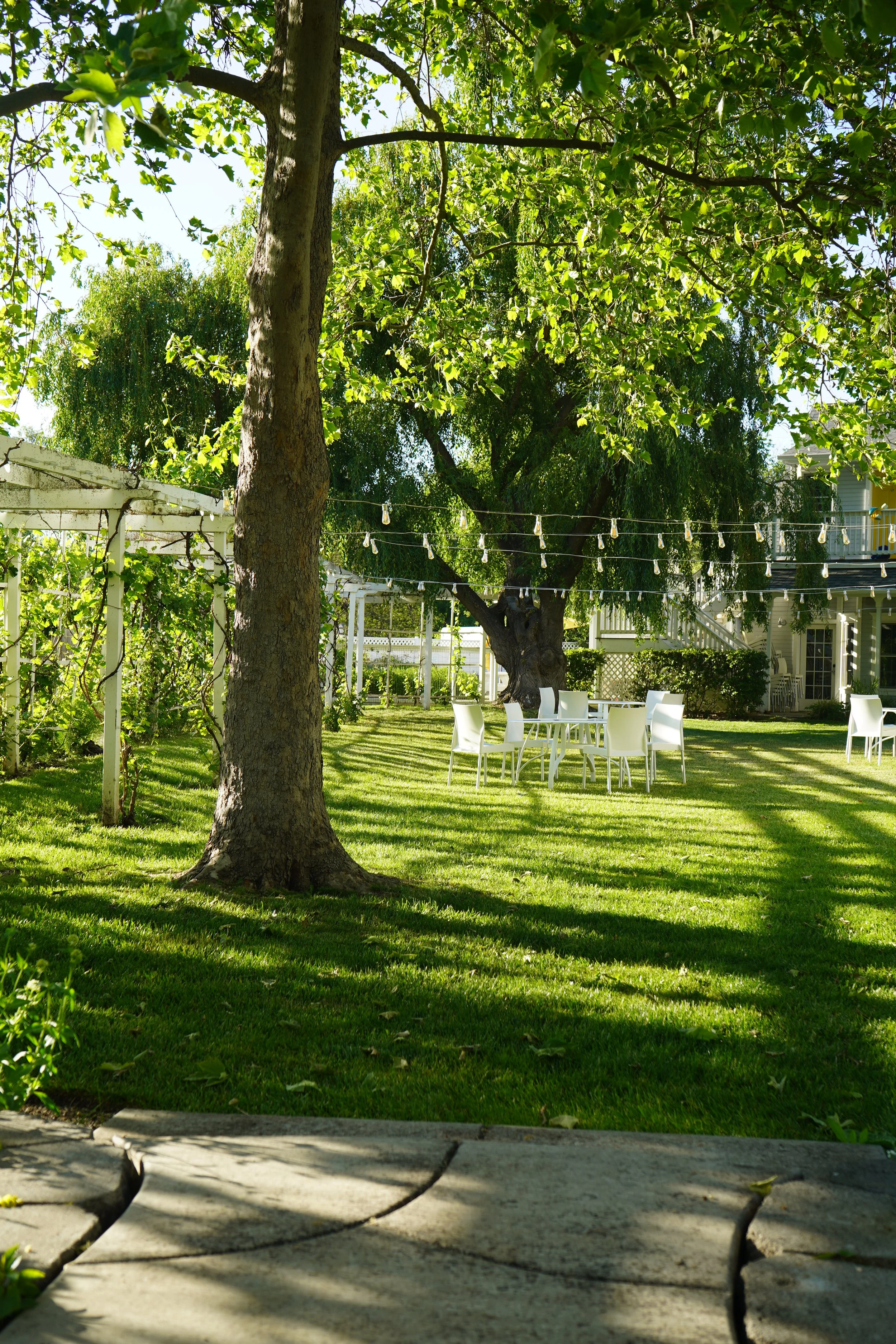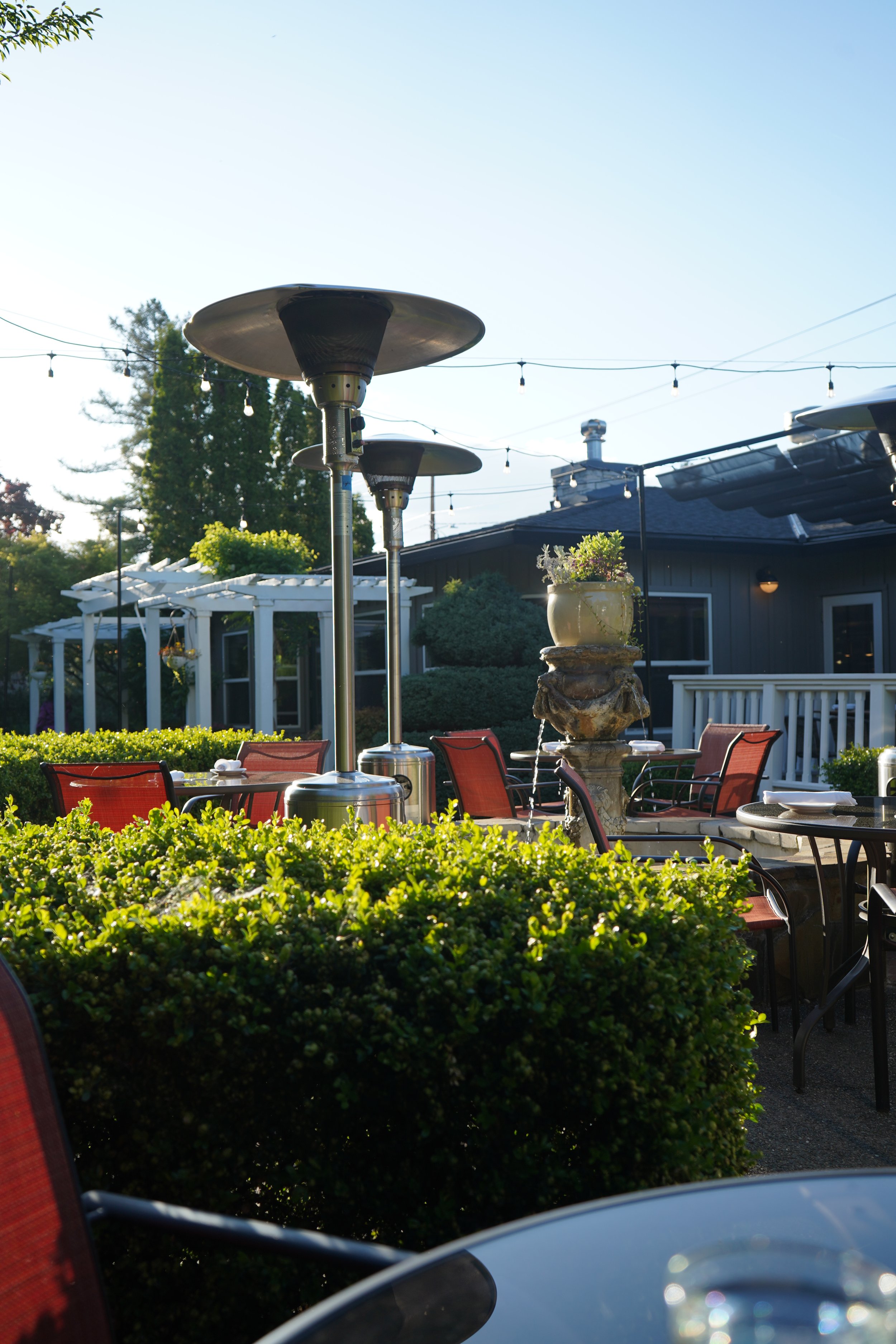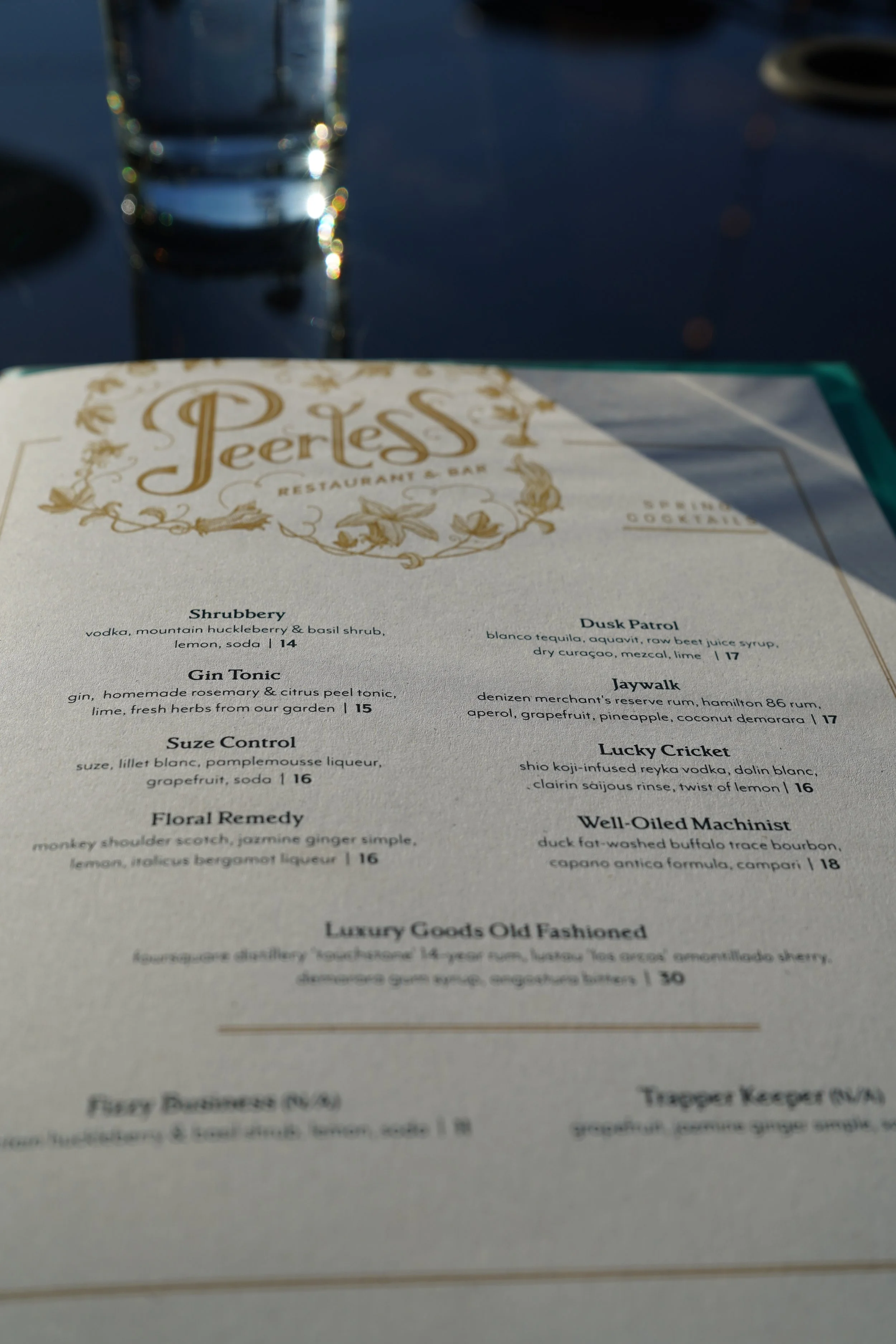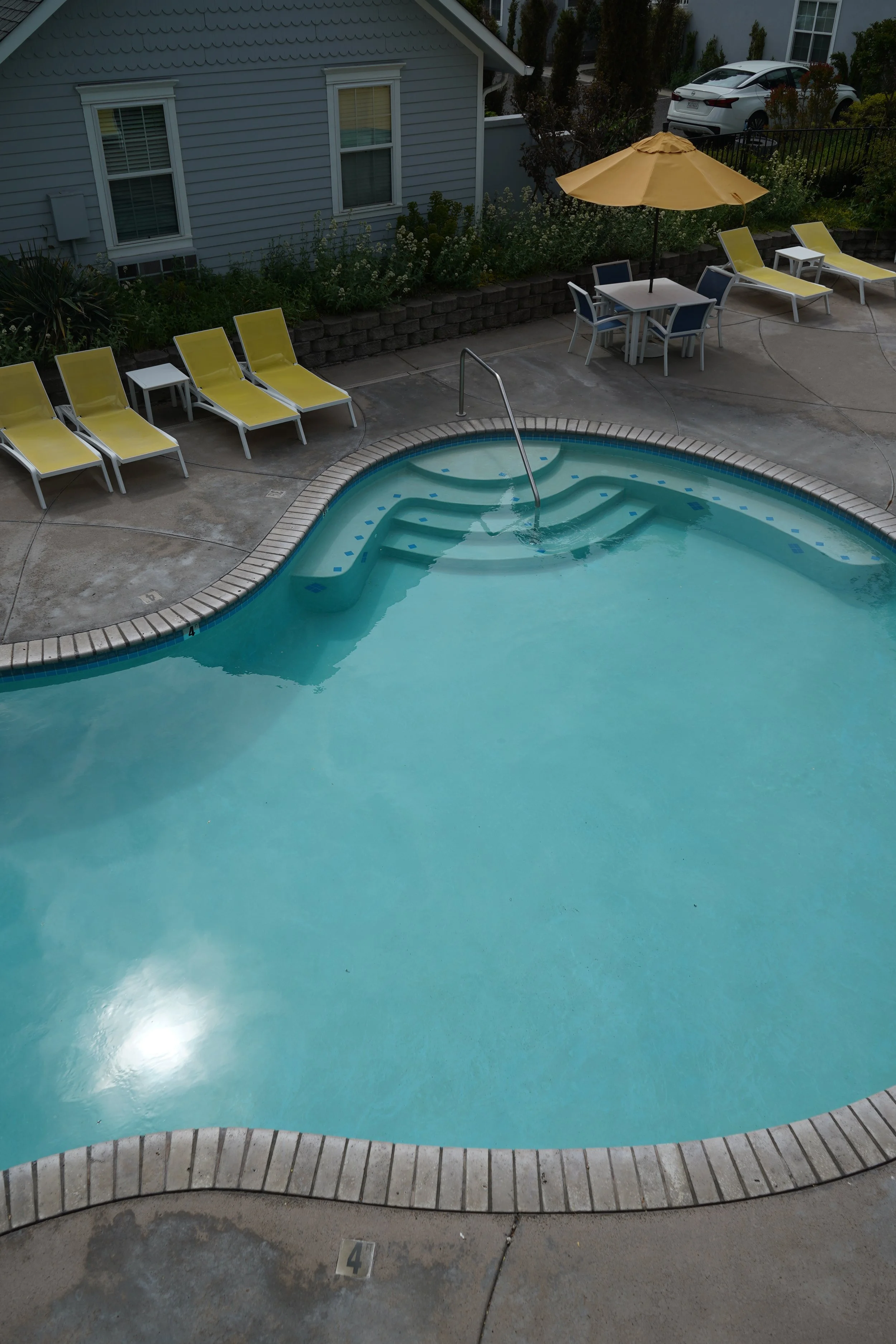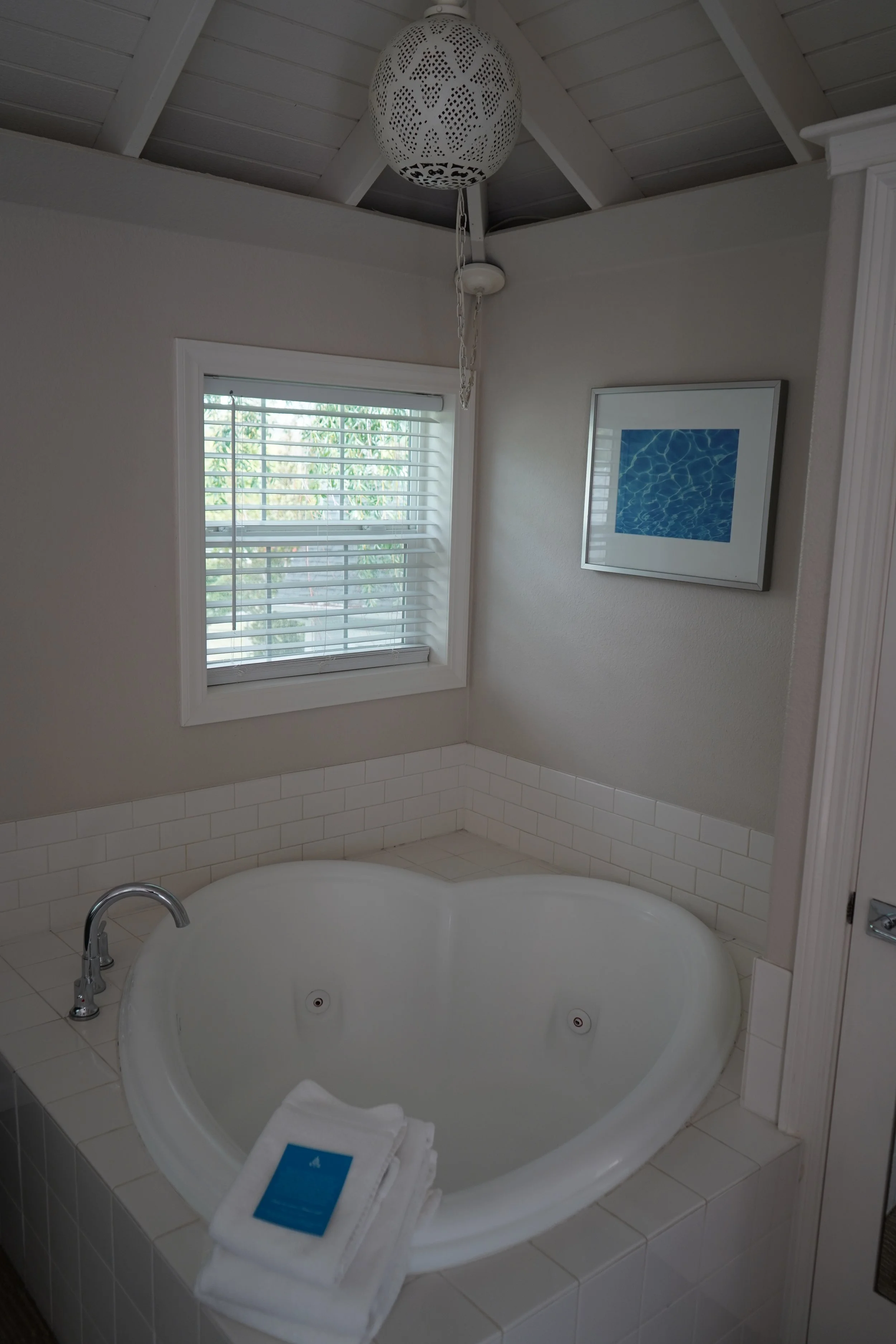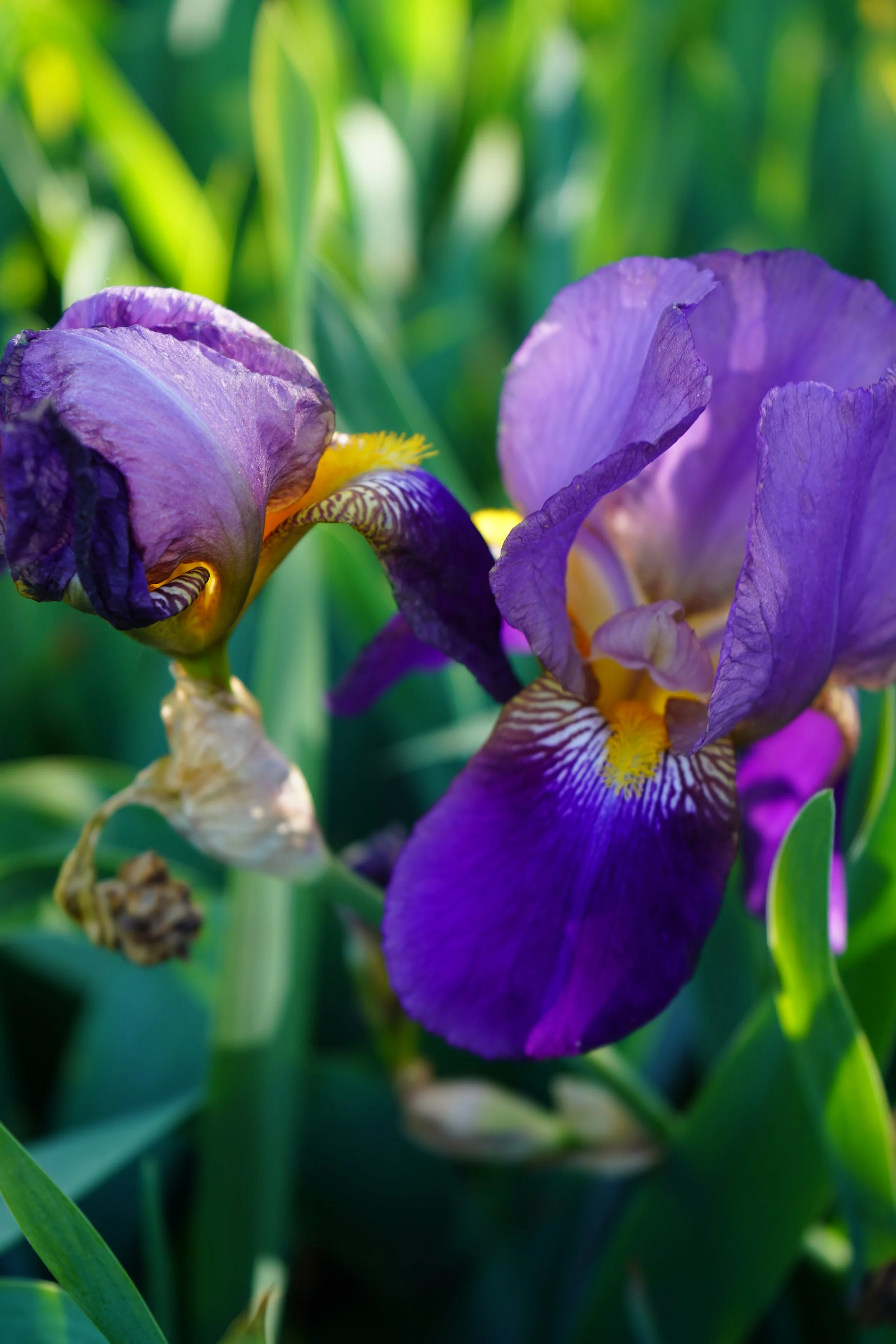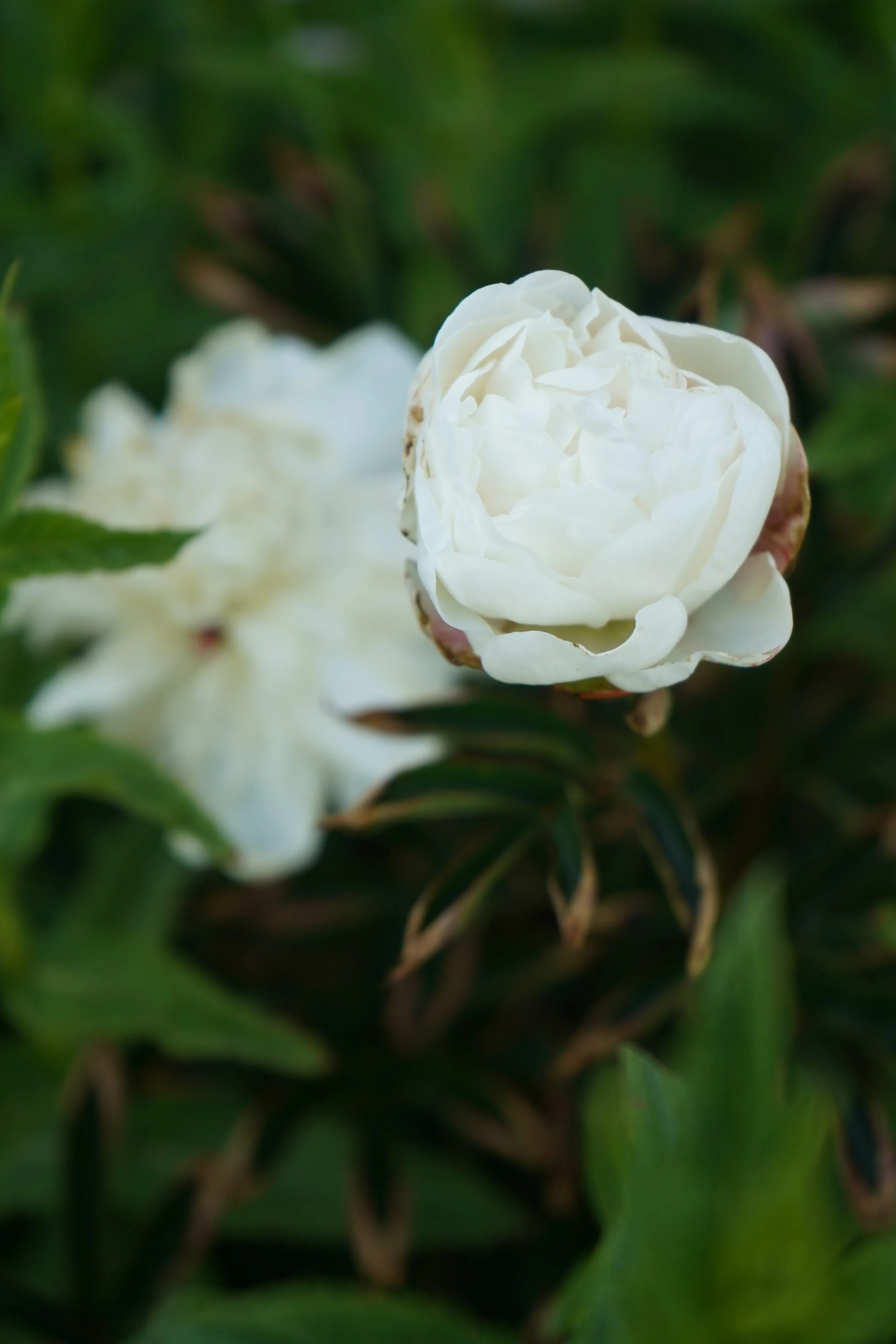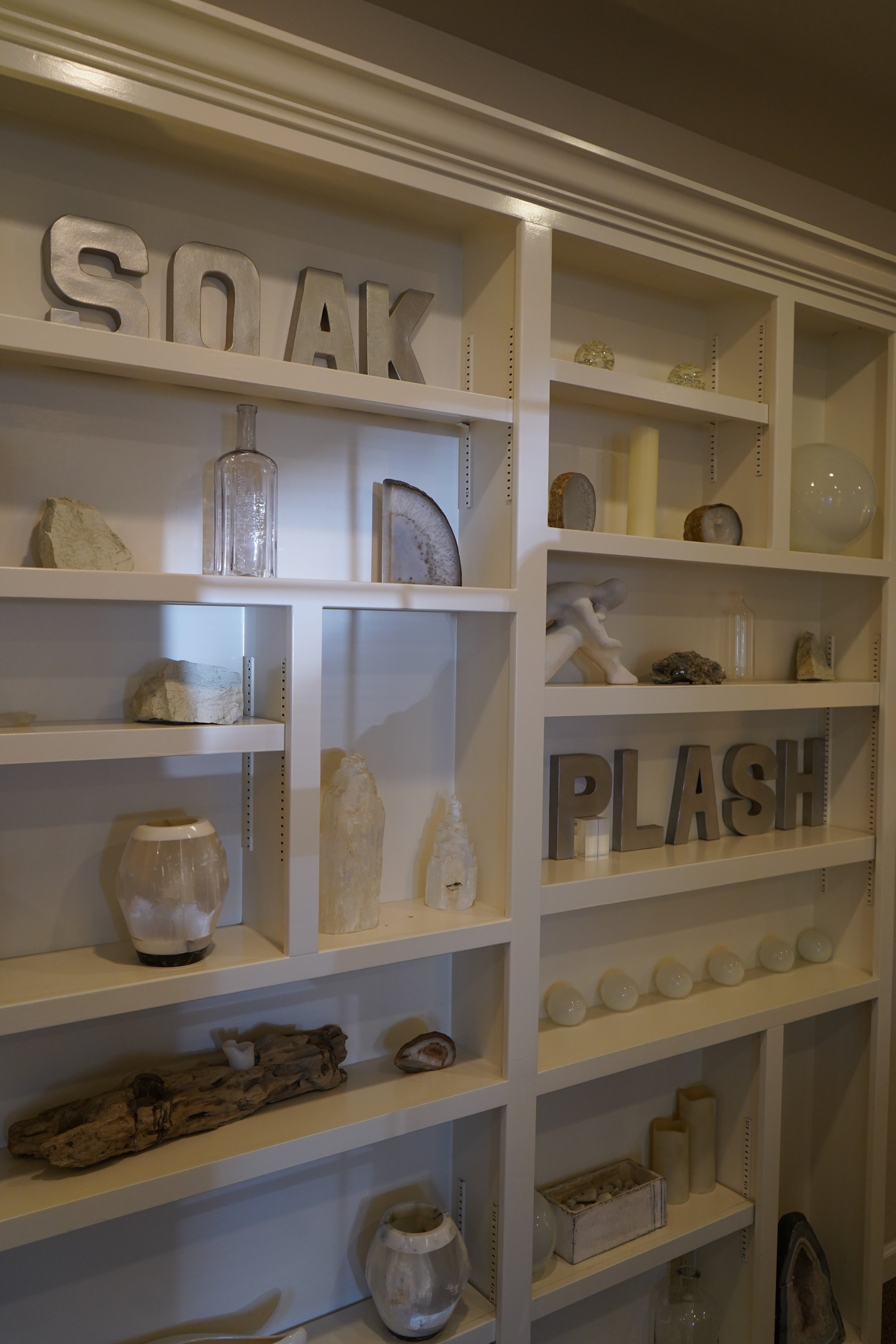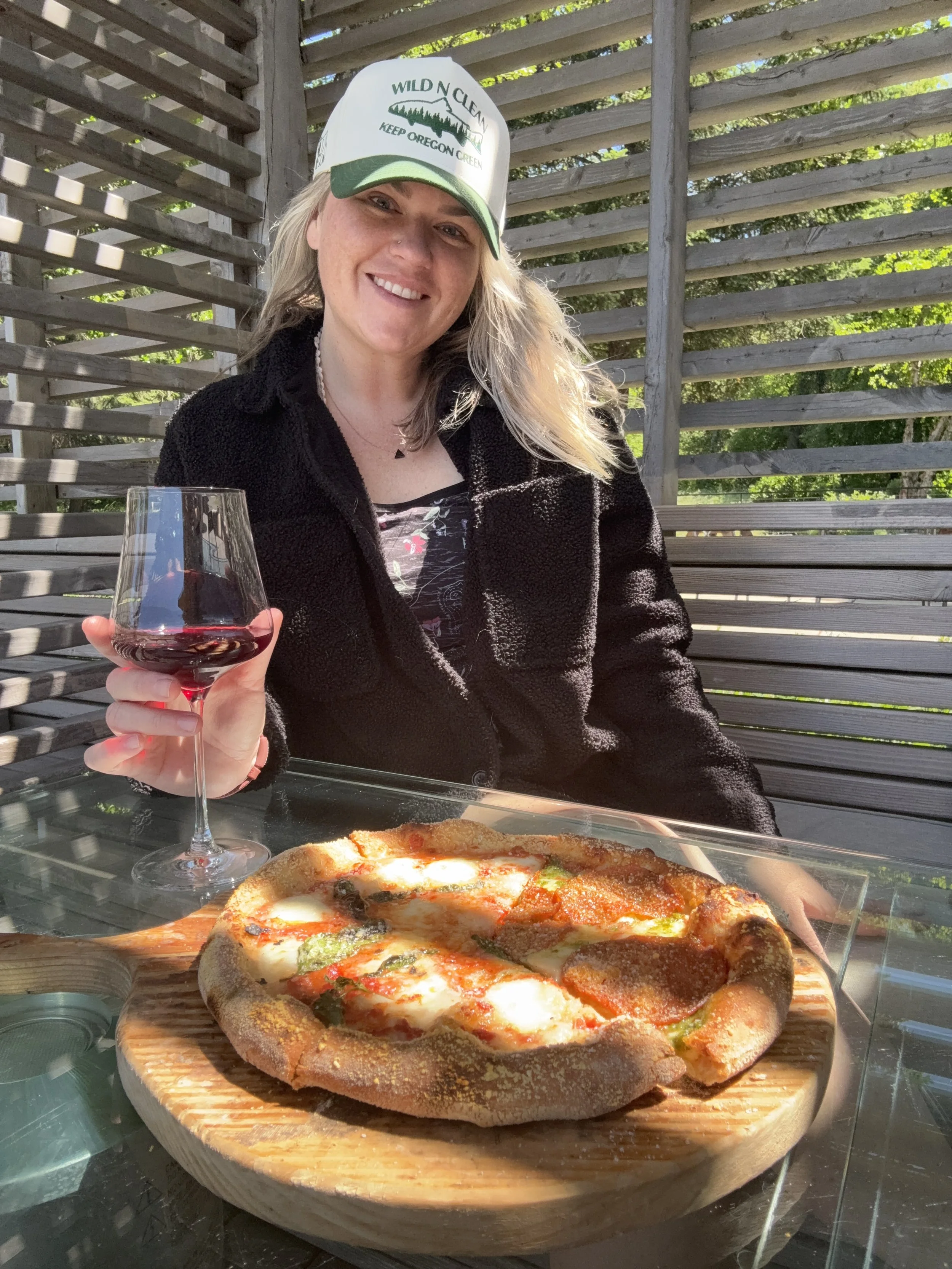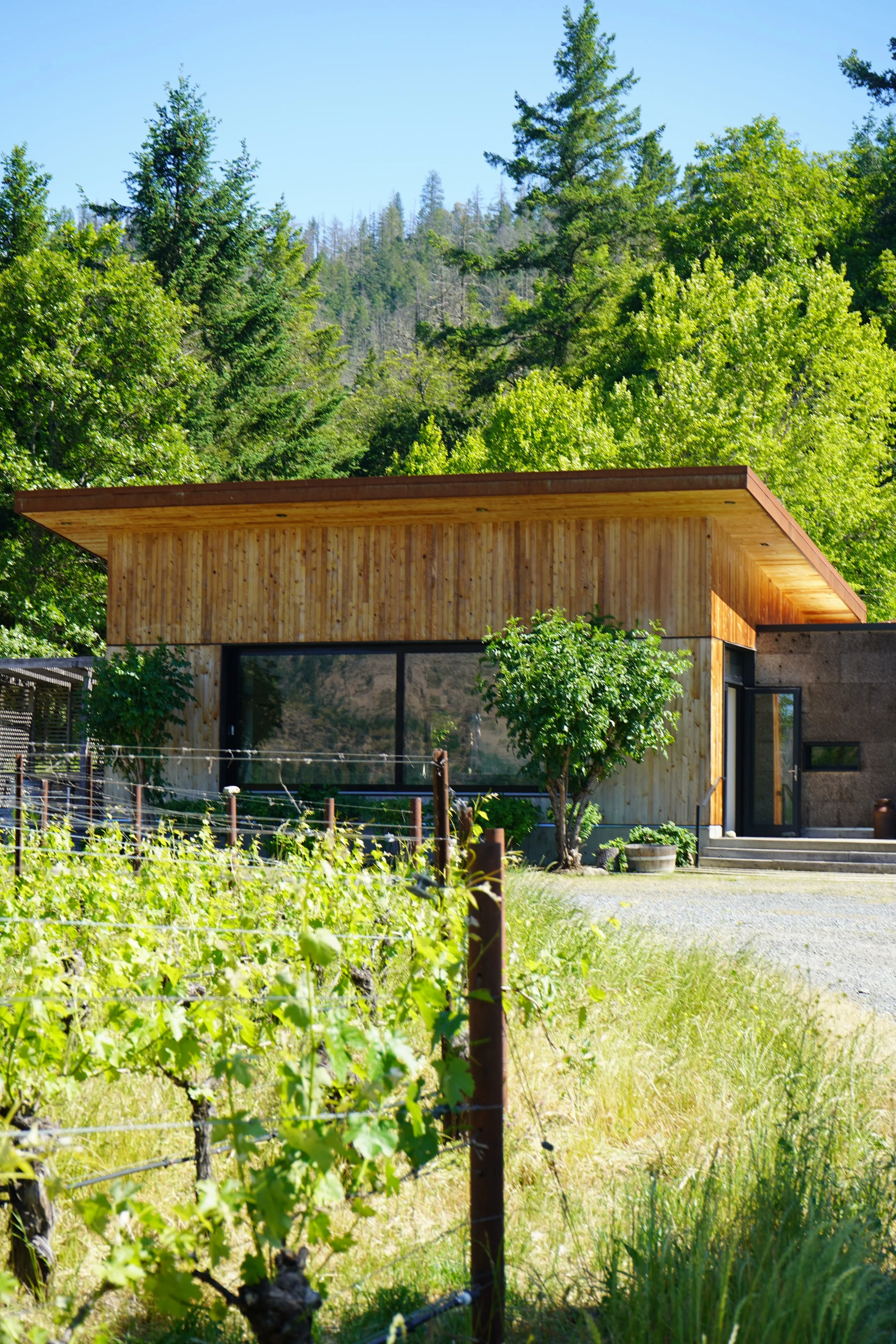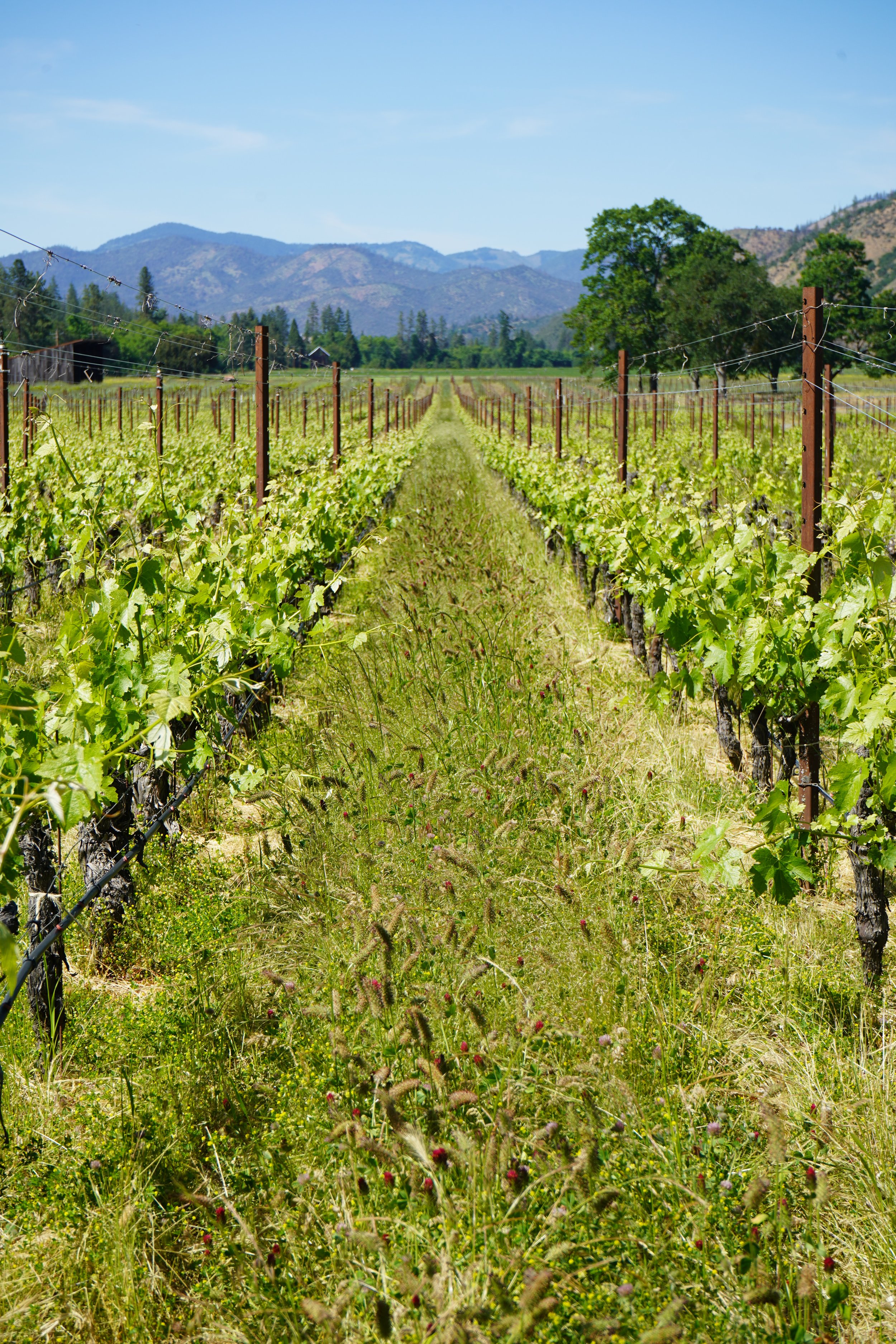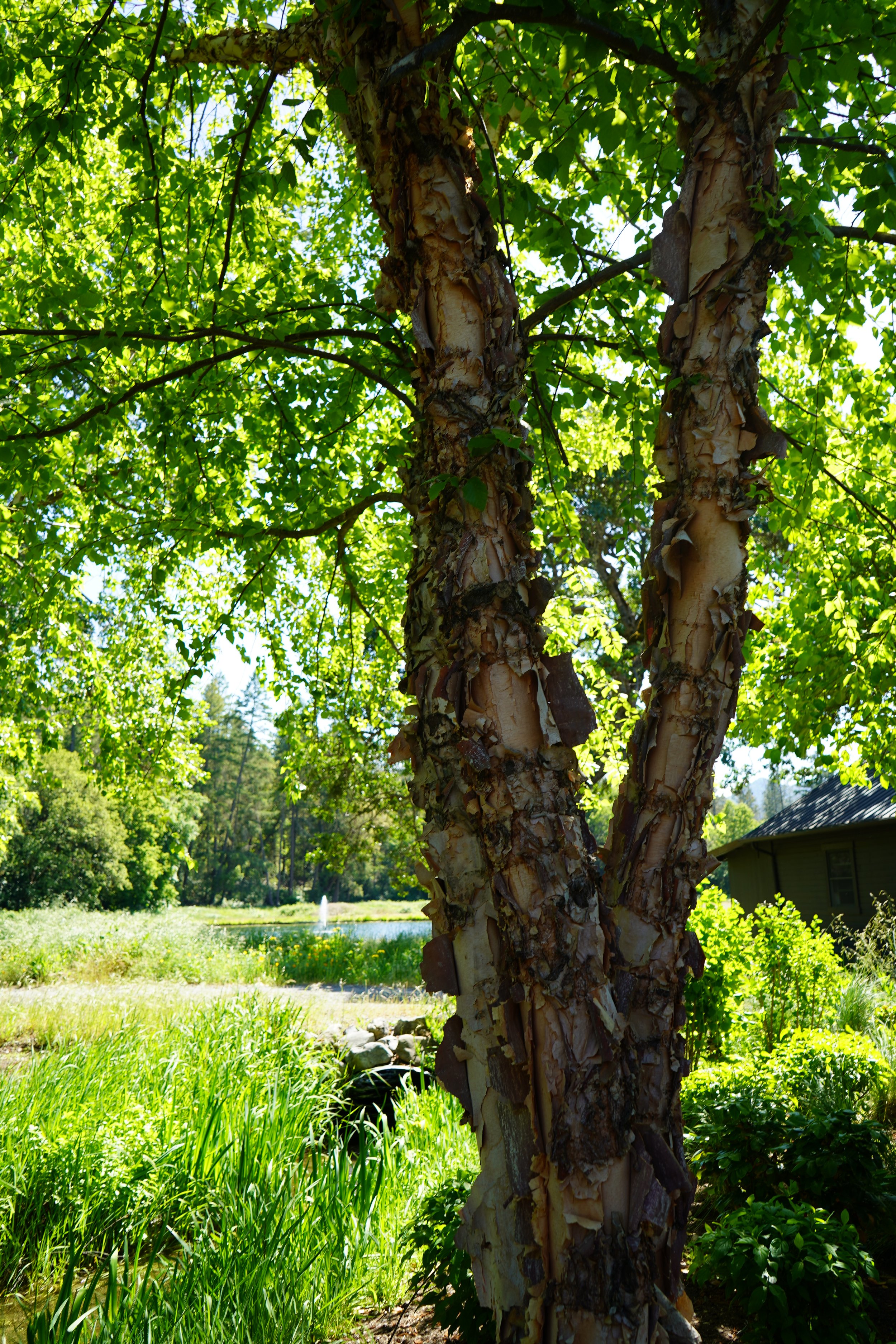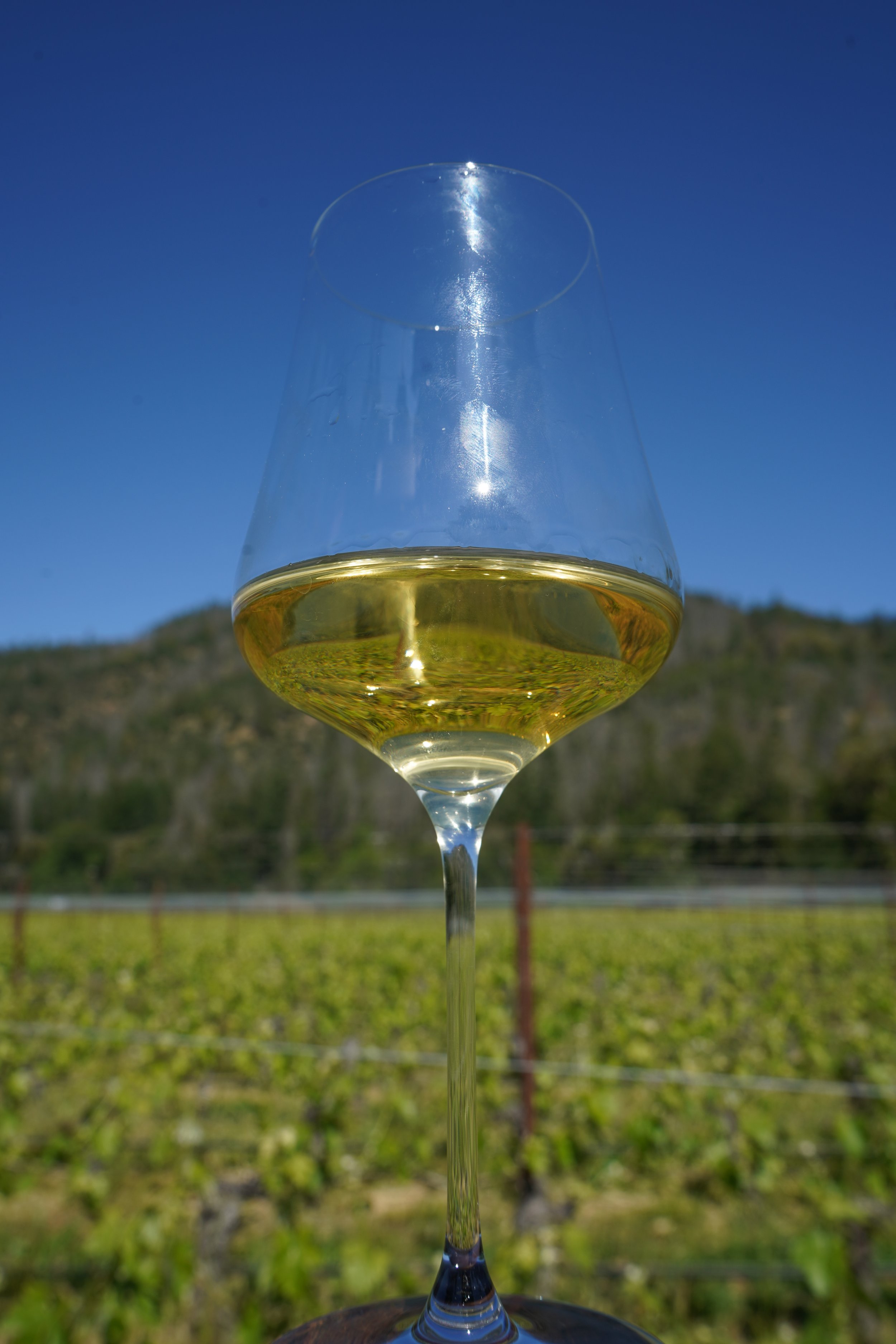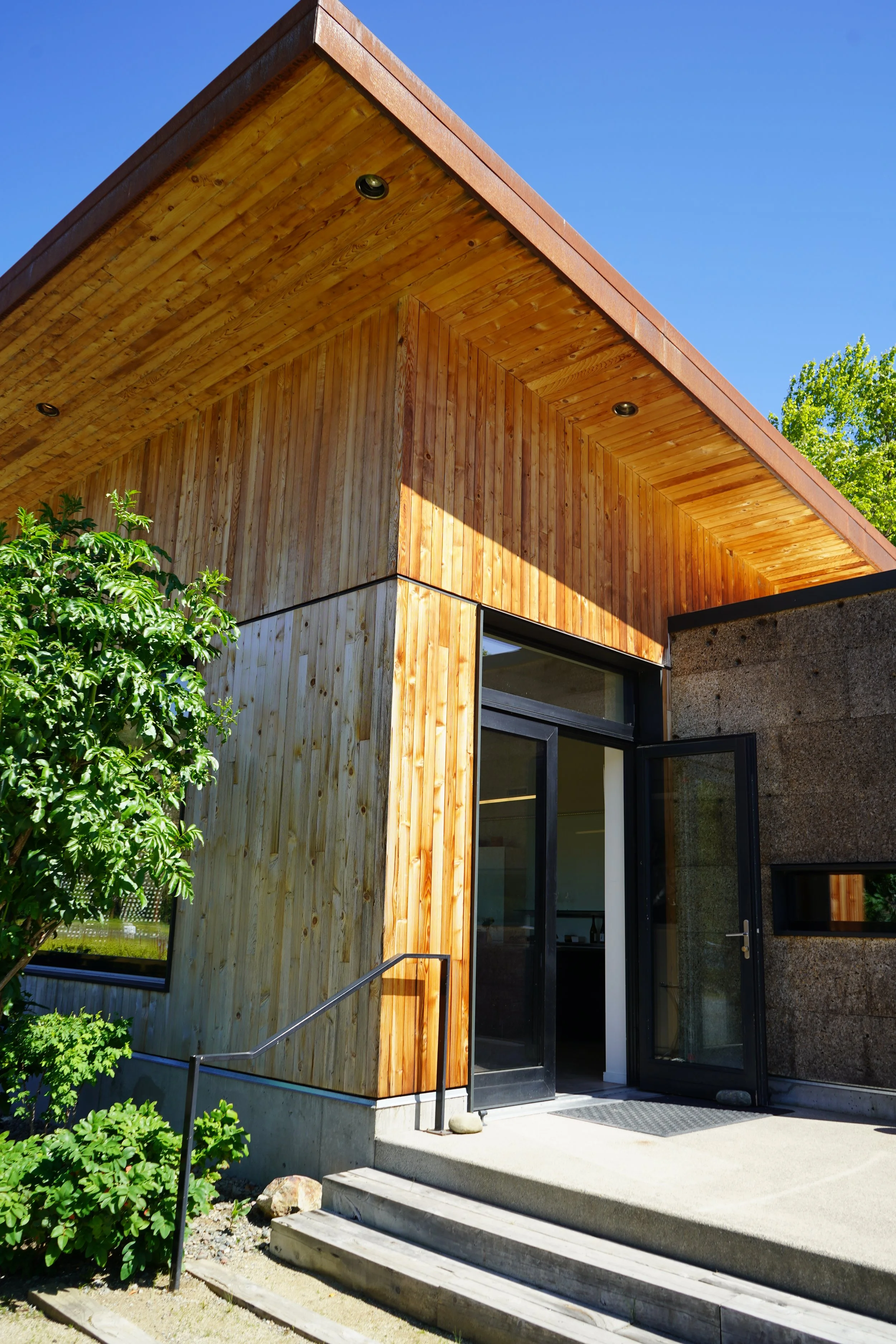River Lessons & Land Back: A Wild Oregon Girl's Spring Pilgrimage
Just a girl and a mineral hot springs- this is a story of healing waters.
The rivers were calling, and we, like migrating salmon, felt the ancestral pull. With winter’s moss still clinging to the trunks and spring sunlight cutting golden ribbons through the clouds, Dave and I set out to Gold Hill, Oregon—a quiet bend in the land where craft meets current.
Back at Sawyer Station in Gold Hill: a community hub and river center in the Rogue Valley.
At the heart of Gold Hill sits Sawyer Station, a warm-bellied gathering place stewarded by Zac Kaufman, where river souls come to refill their cups—of coffee, of stories, of purpose. The walls hum with river lore, and in the corner, lean the oars: long-limbed creatures, hewn of Ash and Douglas Fir, grown nearby and shaped in Talent, Oregon, by hands who know how to listen to the grain.
Filming with Zac felt like pressing our ears to the land. His words braided with the Rogue’s current—about how each Sawyer oar holds not just craftsmanship, but legacy, timbered patience, and water-born wisdom.
Lessons from the Rogue: A River that Remembers
took to the Rogue River, that restless, teaching spirit of Southern Oregon—a current that doesn't just flow, but speaks. It murmurs stories into the canyon walls, smooths them into stones, and carries them on the backs of salmon upstream. With Zac Kauffman and his crew, we pushed off into that living, liquid archive—not merely floating on water, but gliding through time.
Each bend in the river felt like a chapter. Along the banks, elder trees stood as sentinels, and the air held a hush that asked for listening. Zac shared stories between strokes of the Sawyer oars—stories passed from generation to generation like sacred tools. Stories of Gold Ray Dam, once a barrier to life’s migration, now removed, allowing the river to breathe again.
What was once blocked now pulses freely.
What was once silenced now sings.
In that drift, I could feel the legacy of river people—those who grew up chasing riffles, learning patience from eddies, reading water the way others read the sky. Grandparents who taught their children to cast lines not just for fish, but for memory. Parents who handed down more than oars—they handed down responsibility.
Stewardship, I was reminded, isn't management. It’s remembrance.
It’s understanding that the land was never a possession.
That rivers are more than resources—they’re relatives.
As our boat moved forward, Sawyer oars cut the water with grace, each stroke a kind of reverence. These oars are more than tools; they are extensions of a long conversation between tree, craftsman, and current. They are shaped in Talent, Oregon, carved with hands that know what it means to honor both form and function, both tradition and future.
The Rogue responded in kind—its surface shimmered like obsidian in the sun, then turned playful, tumbling us through frothy rapids like a trickster laughing at our attempts to predict its path.
And I realized, sitting there with water flecked across my skin and ancient stories all around me:
This isn’t just a river trip.
This is a pilgrimage.
A remembering.
A promise to return—not just in body, but in stewardship, in voice, in protection.
The Rogue doesn’t belong to us.
But we belong to it.
Zac Kauffman of Sawyer Station and I recording ‘Heartbeat of The River’ a podcast series about our shared waterways and their deeper meaning for us all.
Lithia Springs Resort: Healing in the Waters
By evening, the sun had folded itself gently behind the Siskiyou foothills, casting long golden sighs across the valley. We arrived at Lithia Springs Resort, tucked quietly on the edge of Ashland like a sacred breath between forest and field. It felt less like checking into a hotel and more like crossing a threshold—into rest, into restoration, into ritual.
Our Hillside Suite welcomed us like an embrace: wooden beams, soft linens, windows open to a symphony of spring birdsong and the whisper of breeze through wild grass. The air smelled faintly of lilac and earth, and something deeper still—something ancient.
In the corner of the room, like a shrine, stood the soaking tub, already filling with the resort’s signature lithia-rich mineral water. This water isn’t ordinary—it rises from volcanic aquifers far below, infused with lithium, calcium, magnesium, and sacred history. Long before spas and resorts, these springs were known to Indigenous peoples as places of deep healing.
As I sank into the tub, I felt the water speak through sensation—a language of warm silence. It curled around my bones like a lullaby sung from the belly of the Earth. The minerals worked not just on muscle and skin, but on something older: the soul-tired places that rarely see light.
The room itself became part of the ritual. Outside, bees danced drunkenly through flower beds. A robin perched just beyond the balcony railing, puffed like a Shakespearean jester. Each detail seemed to say:
Slow down. Be held. Return.
Travel Ashland had left us a thoughtfully curated welcome bag—local wine, handmade treats, my favorite hat, and a map of the valley inked with care. It wasn’t just a gesture; it was a tether to the spirit of this region. These gifts reminded me: this land is a host, and we are guests—grateful, transient, humbled.
As night fell, Dave and I sat beneath a canopy of stars, robes wrapped around damp skin, sipping herbal tea and saying very little. It was the kind of silence only water can teach—where presence becomes testament, and healing isn’t something to chase, but something to allow.
Peerless: A Supper for the Rogue
That evening in Ashland, we found ourselves beneath garden lights at Peerless, where every plate is a tribute to the land. Oysters, briny and bright, spoke of the Pacific’s pull, while glasses of Plaisance wine poured the Rogue Valley’s story into our hands—crisp, wild, and grounded in the valley’s rich soil.
Roasted beets, sweet and dark, came from nearby fields tended with care, while pork—crowned with glistening trout roe—echoed the Rogue’s own spirit: wild and composed, a balance of strength and grace. Each bite honored the rivers and fields that feed us, a quiet acknowledgment that stewardship is woven into the meal.
Dessert arrived as a whisper of sweetness—cheesecake light as river foam, draped in cocoa.
As the garden fell into dusk, I tasted the land’s quiet resilience—the Rogue’s promise of life, renewal, and a story that continues, as long as we choose to listen.
The New Klamath: A Journey of Water and Will
We met that morning in Phoenix, Oregon, a small town reborn from the ashes of fire, where resilience lives in every storefront and seedling.
As we loaded into the van for the hour’s drive to the Klamath put-in, I felt the weight of my own fears—the tightening in my chest, the pulse of doubt at the thought of rapids and deep water. But as we wound through the valley, past orchards greening with spring and hills breathing beneath clouds, something in me softened.
This land, scarred and healing, carried its own quiet courage. I could feel it in the way the trees leaned toward light, in the wildflowers threading through broken earth. My fear was real, but so was the land’s gentle insistence: we keep moving forward.
My second trip down the New Klamath- you can read about my first trip and this restoration project two posts back.
Morning light caught the Klamath’s surface, shimmering gold on a river once chained and now running free. This was not just water—it was history in motion, a witness to generations of struggle and resistance. I thought of the dams, built to control and contain, their concrete walls suffocating salmon runs and silencing the river’s voice. For decades, this land waited—its people waited—for restoration, for justice, for the water to return to its rightful path.
As I gripped my paddle, heart hammering against the unknown, I felt my own fear rise—the cold pull of deep water, the surge of rapids ahead. But my fear was small, a personal ripple compared to the currents of this river’s journey. This was a story bigger than me—a story of the Yurok, the Karuk, the Klamath Tribes—who never stopped fighting for this river’s return, for the salmon’s right to swim, for the land’s right to heal.
I let the raft move beneath me, the water’s strength carrying us forward. I thought about how land back is not just about property lines or legal victories. It’s about listening—to rivers, to soil, to the quiet voices of those who’ve lived with this land far longer than our maps can trace. It’s about overcoming fear—whether it’s fear of the rapids, or fear of confronting the harm we’ve done, or fear of the unknown future.
Every stroke of the paddle was a prayer, a promise: to honor the river’s rebirth, to carry its story forward. I realized then that my presence here—nervous, exhilarated, humbled—was a small act of witnessing, a way of telling this story for others. To remind those who feel powerless that the river, like the land, can heal. That fear can be transformed into courage.
As we reached calm water, I exhaled deeply, feeling the Klamath’s song settle into my bones. The river’s journey was not complete, but it was moving forward—and so was I.
Indigo Creek Outfitters has a house available to stay at on their multi day Klamath trips.
Lithia Springs: The Tower Suite and the Heart of Renewal
After the river’s wild embrace, we returned to Lithia Springs Resort, this time climbing higher into the Tower Suite, where romance and renewal danced in the air. From the balcony, we gazed down at the pool and jacuzzi, the water shimmering beneath the late afternoon sun like a living gem. The laughter of bathers echoed softly, and the scent of mineral-rich springs floated up, a reminder that healing was close at hand.
Inside, the suite welcomed us with gentle opulence—a heart-shaped tub carved into the corner, its deep basin a quiet invitation to sink into warmth and forget the world outside. There was something almost whimsical, almost childlike about its shape, but beneath the playfulness was a deeper magic: the symbol of love, of surrender, of opening to something greater than oneself.
We filled the tub, letting the mineral waters swirl, and watched as light from the windows danced across the ceiling. The suite became our sanctuary, a place to hold each other and all the emotions stirred by the journey—the fear overcome on the river, the stories carried from land and water, the quiet acknowledgment that to love is also to trust, to let go, to float in the unknown.
My happy place- in the sun in a mineral spring.
Cowhorn Vineyard: A Table Set by the Land
A Wild Oregon Girl at a Wild Oregon Winery
That afternoon, we found ourselves at Cowhorn Vineyard, where the air was thick with the scent of earth and vine, and every stone seemed to hum with the memory of ancient soils. This wasn’t just a winery; it was a living testament to what can happen when land is loved, tended, and listened to. Cowhorn, with its women-led vision and biodynamic practices, had already won me over when I visited their restaurant in Jacksonville the month before. But here, among the vines and wildflowers, I felt the full weight of its magic.
The land here breathes differently. You can feel it in the way the rows of vines curve with the natural contours of the hill, in the way native plants and wild grasses are encouraged to grow between the rows, in the bees darting between blossoms. It’s as if the earth itself is guiding the process, and the winemakers are merely listening, translating the land’s quiet voice into bottles of wine and plates of food.
We gathered for a pizza and wine pairing, seated outdoors beneath a sky vast and generous. The pizza—topped with ingredients grown steps from where we sat—was a masterpiece of simplicity: sweet onions, roasted vegetables, creamy cheese. The wine was more than a drink; it was a story of the soil, of the Rogue Valley’s mineral bones and sunlit skin. Each glass felt like a conversation with the land—earthy, wild, and tender all at once.
As we ate and drank, I felt the arc of my journey—the waters of the Klamath, the stories of resilience, the heart-shaped tub’s invitation to trust—all leading to this table in the sun. Cowhorn wasn’t just offering food and wine; it was offering a way forward, a vision of what it means to live in balance, to be a good guest of the land.
A Garden’s Whisper: Closing the Circle
Our final hours unfolded in the gardens of Lithia Springs, where the mineral-rich waters met the delicate hush of spring blossoms. I wandered among roses and wisteria, feeling the weight of the river’s journey still settling into my bones. Here, in this quiet corner of Ashland, the spirit of the place spoke softly—an echo of Shakespeare’s woods, where fools and kings alike found transformation beneath moonlight and leaf.
I thought of the Klamath’s roar, the quiet resilience of Cowhorn’s vines, the Rogue’s promise to carry us forward. And I thought of the healing waters, their silent song a reminder that the land’s gifts are not to be taken for granted. Stewardship, like love, is a practice of patience—of listening and returning, of walking gently through the world and leaving it better than we found it.
In these gardens, beneath a sky blushing with evening, I felt the peace that comes not from escape, but from alignment. The rivers run, the land remembers, and we—like the players on a stage—are given a part to play. Our role is simple but sacred: to honor the story, to care for the stage, and to leave behind something true and beautiful for those who follow.
